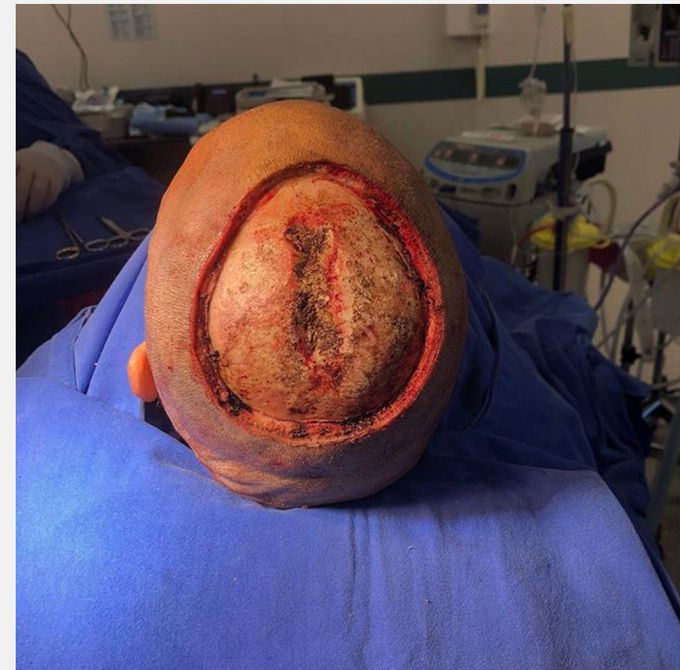


Squamous cell carcinoma
This is a huge squamous cell carcinoma (T4) in the head, grown over 5 years until this patient sought help. He was treated initially with a huge Orticochea Multi-Flap and after sent for chemo and radiation therapy. Cutaneous squamous cell carcinoma (SCC) represents 20 % of all non-melanoma skin cancer and is a deadly threat owing to its ability to metastasize to any organ in the body. High-risk features are depth of invasion (>2 mm), poor histological differentiation, high-risk anatomic location (face, ear, pre/post auricular, genitalia, hands, and feet), perineural involvement, recurrence, multiple SCC tumors, and immunosuppression. Metastatic SCC has a mortality rate of >70 %. Treatment options include surgery, radiation therapy, chemotherapy (cisplatin), and any combination of the above. Surgery alone can be used for metastatic of high-risk SCC treatment but is not as effective as surgery in conjunction with radiation therapy. NCCN guidelines recommend 4-to 6-mm clinical margins for standard excision of low-risk SCC and 6 to 10mm in high-risk, like in this case. In this patient, the resection was made with a 10mm margin, the resection was full-thickness (up to the periosteum), and in the central part, the outer table of the skull was resected. To cover this defect, a big Orticochea flap was made. The Orticochea flap is an excellent option for scalp reconstruction as it decreases operative time may provide hair-bearing skin. After the surgery, the patient was sent to receive chemo and radiation.


